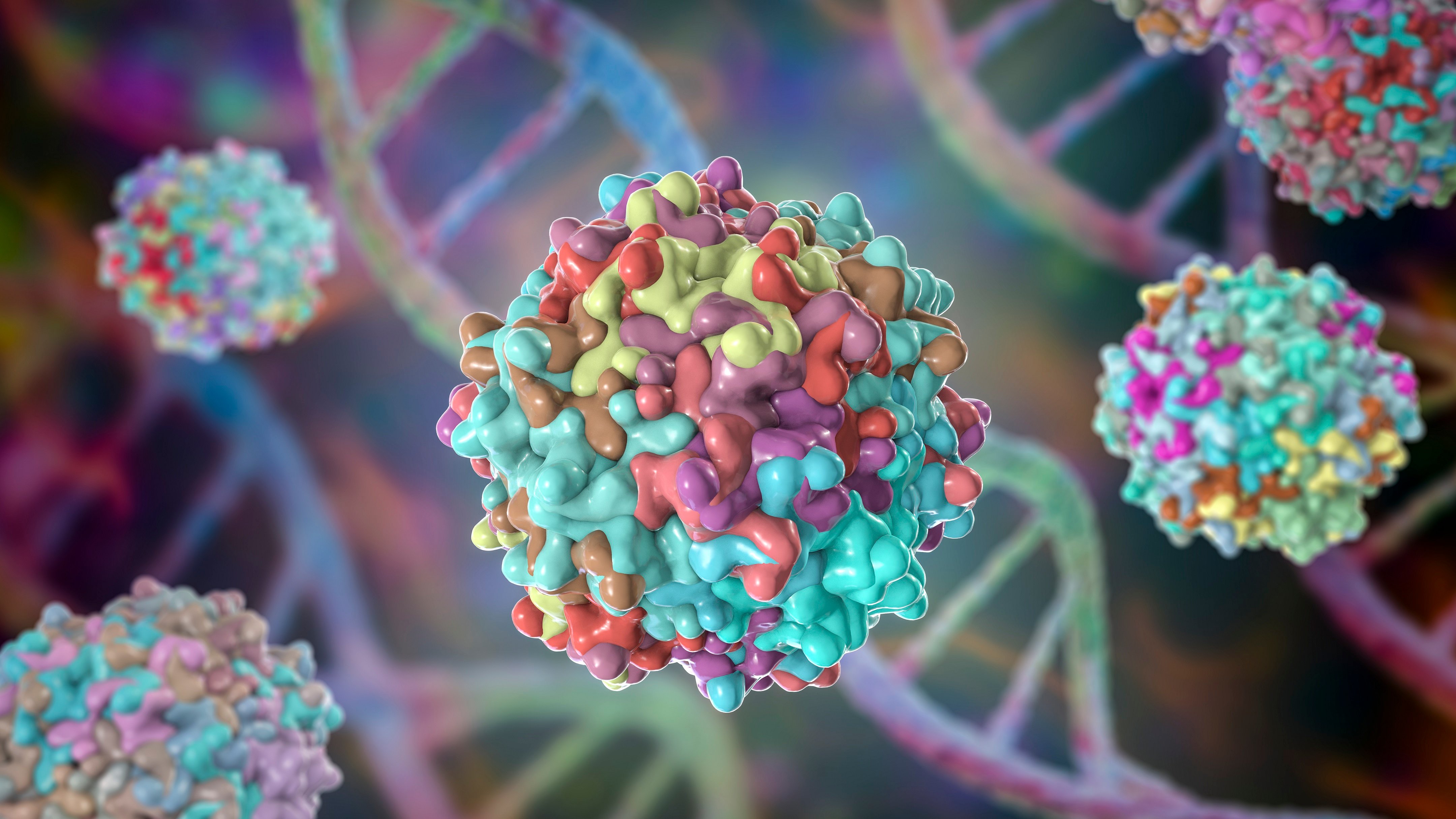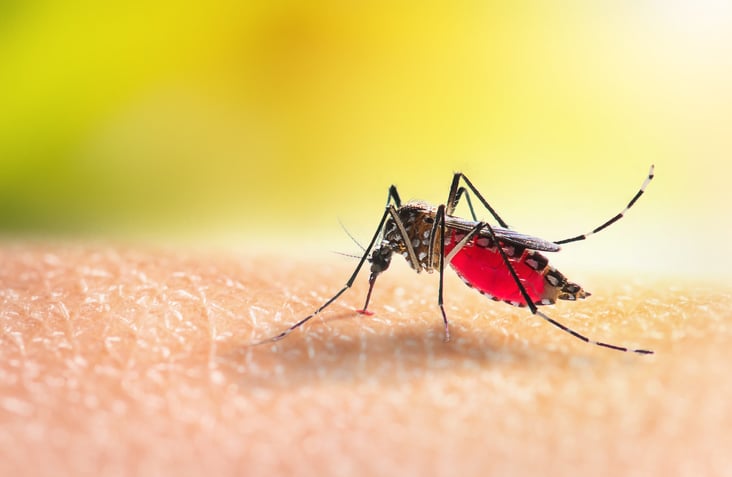预约演示
更新于:2025-05-07
Encephalitis, Japanese
日本脑炎
更新于:2025-05-07
基本信息
别名 ENCEPHALITIS, JAPANESE B、ENCEPHALITIS, RUSSIAN AUTUMNAL、ENCEPHALITIS, SUMMER + [37] |
简介 A mosquito-borne encephalitis caused by the Japanese B encephalitis virus (ENCEPHALITIS VIRUS, JAPANESE) occurring throughout Eastern Asia and Australia. The majority of infections occur in children and are subclinical or have features limited to transient fever and gastrointestinal symptoms. Inflammation of the brain, spinal cord, and meninges may occur and lead to transient or permanent neurologic deficits (including a POLIOMYELITIS-like presentation); SEIZURES; COMA; and death. (From Adams et al., Principles of Neurology, 6th ed, p751; Lancet 1998 Apr 11;351(9109):1094-7) |
关联
30
项与 日本脑炎 相关的药物靶点- |
作用机制 免疫刺激剂 |
原研机构 |
在研适应症 |
最高研发阶段批准上市 |
首次获批国家/地区 澳大利亚 |
首次获批日期2012-12-09 |
靶点- |
作用机制 免疫刺激剂 |
在研适应症 |
非在研适应症- |
最高研发阶段批准上市 |
首次获批国家/地区 印度 |
首次获批日期2012-07-01 |
104
项与 日本脑炎 相关的临床试验NCT06674837
Diagnostics and Surveillance of Acute Meningo-encephalitis Among Children in Cambodia With a Focus on Japanese Encephalitis Virus
The primary objective of this study is to quantify the clinical burden of Japanese Encephalitis (JE) and the asymptomatic circulation of JEV among Cambodian children, through two pediatric cohorts: non-febrile children at recruitment and children hospitalized with febrile neurological syndrome (FNS). Secondary objectives include estimating anti-JEV seropositivity rates, identifying individual risk factors and living conditions associated with JEV infection, characterizing clinical and biological profiles related to disease severity, and evaluating the role of deficiencies in interferon (IFN) response in severe JEV infections.
开始日期2025-06-01 |
申办/合作机构- |
NCT06680128
A 2-Stage, Phase I/II, Active-controlled, Randomized, Observer-blinded, Dose-finding Study to Assess the Safety, Reactogenicity, and Immunogenicity of SK Japanese Encephalitis MRNA Vaccines (GBP560) in Healthy Adults (Aged 18 Years and Older)
This is a 2-Stage, Phase I/II Study to Assess the Safety, Reactogenicity, and Immunogenicity of SK Japanese Encephalitis mRNA Vaccines (GBP560) in Healthy Adults (Aged 18 Years and Older)
开始日期2025-02-24 |
申办/合作机构 |
NCT06678373
Monitoring JE Antibody Levels in Healthy Populations and Immunization Strategy in Low-Prevalence Areas
This study aims to assess the neutralizing antibody levels and prevalence risk of Japanese encephalitis among residents in low-endemic areas, as well as to evaluate the immunogenicity, safety, and immune persistence of the inactivated Japanese encephalitis vaccine across different age groups in healthy populations. The study uses an open-label, single-arm trial design with a sample size of 250 participants. Primary endpoints include pre- and post-vaccination serum neutralizing antibody levels, seroconversion rates, and incidence of adverse events.
开始日期2024-11-14 |
申办/合作机构 |
100 项与 日本脑炎 相关的临床结果
登录后查看更多信息
100 项与 日本脑炎 相关的转化医学
登录后查看更多信息
0 项与 日本脑炎 相关的专利(医药)
登录后查看更多信息
3,829
项与 日本脑炎 相关的文献(医药)2025-07-01·Journal of Invertebrate Pathology
Biosynthesis of silver nanoparticles using soil actinobacterium Streptomyces anthocyanicus and investigation of their larvicidal potentials against Culex quinquefasciatus Aedes aegypti, and Anopheles stephensi
Article
作者: Kalpana, Manickam ; Maheswaran, Rajan ; Kalaivani, Suresh ; Devapriya, Palanisamy ; Raguvaran, Krishnan
2025-06-01·Zoonoses and Public Health
A Special Insight on the Causal Agents and Mode of Occurrence of Japanese Encephalitis (JE ) Infections in Rural Regions of Assam, India
Article
作者: Gogoi, Nayanmoni ; Talukdar, Oli ; Bhattacharya, Satya Sundar
2025-06-01·Journal of Infection and Chemotherapy
Emergence of Japanese encephalitis in a previously non-reported area: Three consecutive annual cases from a tertiary center in Narita, Chiba, Japan
Article
作者: Hanayama, Satoki ; Kikkawa, Yuriko ; Furukawa, Shogo ; Namiki, Masahiro ; Ozawa, Yukiko ; Muranaka, Emiri ; Hase, Ryota ; Yoshizawa, Koki
62
项与 日本脑炎 相关的新闻(医药)2025-03-24
Bharat currently has five products in its personalized medicine pipeline—two in cell culture and three in the gene therapy segment, the Hindu Business Line reported late last week.
With a storied history in vaccine development, India's Bharat Biotech is shaking things up and answering the call of advanced therapeutics. Bharat has unveiled plans to set up its first cell and gene therapy manufacturing facility at the Hyderabad, India, life sciences cluster known as Genome Valley. The drugmaker will lay out around $75 million for the project, multiple local news outlets have reported. The move by Bharat represents (PDF) its foray from vaccines into cutting-edge regenerative and personalized therapies, the company said in a Mar. 20 press release. Although a specific date wasn’t disclosed, the 50,000-square-foot plant is expected to begin full operations with the finalization of regulatory approvals and the completion of a build-out phase.Bharat currently has five products in its personalized medicine pipeline—two in cell culture and three in the gene therapy segment, the Hindu Business Line reported late last week, citing comments from Bharat's executive chairman Krishan Ella. The company is working on a range of CAR-T cell, CAR-NK cell and off-the-shelf gene therapies, Bharat's chief development officer Raches Ella added, as quoted by the Times of India. “Bharat Biotech, with its extensive experience and proven excellence in viral vaccine manufacturing, is uniquely positioned to master these complexities and produce human-grade vectors at the scale and consistency needed for clinical trials,” Krishan Ella said in the company's release. Additionally, Bharat has revealed a new collaboration pact with the University of Wisconsin-Madison that has the potential to expand into commercial deals that include in-licensing. The company is also looking ahead to exporting and the potential of medical tourism in the cell and gene therapy segment.Bharat popped up on the global radar in 2019 when it became the largest supplier of rabies vaccines in the world after acquiring Chiron Behring Vaccines from GSK in an all-cash deal. The price of the purchase wasn’t disclosed.At the time, India-based Chiron Behring had just a single product in the rabies vaccine Rabipur, while Bharat Biotech was selling a Vero cell-based rabies vaccine, Indirab. The acquisition boosted Bharat's annual rabies capacity to 25 million doses.During the pandemic, Bharat also rolled out a COVID-19 vaccine, dubbed Covaxin, which won approvals in multiple countries including India, Malaysia and Mexico. Attempts to introduce the shot in the U.S. with partner Ocugen proved less fruitful, however. Bharat currently boasts a portfolio of more than 19 vaccines and 4 biotherapeutics, with shots in influenza H1N1, rotavirus, Japanese encephalitis, rabies and cholera, among multiple others.

疫苗并购上市批准信使RNA
2025-03-24
Valneva’s chief medical officer said the company has capacity to send more doses if needed. Image credit: Shutterstock/mundissima.
Valneva will provide 40,000 doses of its chikungunya vaccine Ixchiq to French overseas territory La Réunion as part of efforts to curb the spike in disease cases on the island.
Valneva confirmed that French authorities are paying for the supply of doses as part of a national aim to prioritise vaccination in older adults with co-morbidities.
French biotech Valneva, will send the doses in early April through distribution agreements with Réunion’s wholesalers. In agreement with the island’s local public health agency, more vaccine doses could be made available.
La Réunion has experienced a sharp rise in chikungunya cases this year. Authorities have recorded 8,600 cases since August 2024, though the outbreak is gaining traction, with nearly 3,000 cases registered in the first week of March alone. La Réunion has a population of just under 900,000. As per the 2021 census, 18.7% of the population is over the age of 60.
Chikungunya, caused by its namesake virus, is a mosquito-borne disease mainly found in tropical regions. Symptoms include fever and severe joint pain, which are similar to Dengue and Zika infections, making it harder to diagnose.
Ixchiq is one of two licensed vaccines to prevent the disease caused by chikungunya virus in adults. The other, Bavarian Nordic’s Vimkunya, is currently approved for use in adolescents – though Ixchiq could soon have the same label after a positive recommendation by the European Medicine’s Agency (EMA).
Valneva’s vaccine, which reached market before Vimkunya, generated sales of €3.7m ($4.02) in 2024. Whilst sales for the vaccine were lower-than-expected, the company reported strong overall growth for the past year, with product sales up 13% in 2024 compared to 2023. Valneva also develops vaccines for cholera and a Japanese encephalitis.
Ixchiq is a live-attenuated vaccine that contains a weakened strain of the chikungunya virus. Vimkunya, on the other hand, is a virus-like particle (VLP) vaccine, meaning it works by mimicking the chikungunya virus to trigger an immune response. Both jabs are administered as a single shot.
Access to Ixchiq in low and middle-income countries is supported by a $41.3m partnership with the Coalition for Epidemic Preparedness (CEPI). Valneva also has an ongoing license agreement with the Serum Institute of India (SII) to supply its vaccine at an affordable price to markets in low and middle-income regions in Asia.
Due to frequent travel between mainland France and La Réunion, there is a risk of transmission back to France and even to other French overseas territories. The US Centers for Disease Control and Prevention (CDC) has alerted warned travellers to the popular holiday destination of chikungunya infection risk.
Valneva’s chief medical officer Juan Carlos Jaramillo, said: “Chikungunya outbreaks spread rapidly, so it is crucial to vaccinate as many people as possible to help contain the virus. We have the capacity to supply more doses and will continue working closely with Agence Régionale de Santé La Réunion to manage this outbreak locally and prevent its spread to other regions through international travel.”
疫苗上市批准引进/卖出
2025-02-03
Valneva hauled in a $32.8 million contract to supply the U.S. Department of Defense with vaccines to treat Japanese encephalitis.
While much of Valneva's focus these days is centered on its landmark vaccine for chikungunya virus, the French immunization specialist's catalog of older shots continues to serve up fresh government deals.Valneva has obtained a $32.8 million contract to supply the U.S. Department of Defense with an undisclosed number of vaccine doses to treat Japanese encephalitis, which is endemic in Southeast Asia, India and China.The vaccine, Ixiaro, is the only Japanese encephalitis approved for use by the U.S. military, the company said in a Jan. 30 press release. It was developed through an R&D agreement with the Walter Reed Army Institute of Research, according to the company.The vaccine is specifically cleared to help prevent Japanese encephalitis in people two months of age and older who travel to or live in areas where the disease is endemic. In the U.S., Valneva sells and distributes Ixiaro directly to the military and in the private travel vaccination market. Japanese encephalitis causes inflammation of the brain and is typically transmitted through the bite of infected Culex species mosquitoes. The disease is thought to affect around 70,000 people in Asia each year and is fatal to an estimated 30% of those who show symptoms. About half of the survivors suffer permanent brain damage, Valneva said. Under the terms of Valneva's one-year contract, the U.S. will purchase a minimum of $32.8 million worth of the vaccine, with the option to buy additional doses over the next 12 months. Deliveries of Ixiaro doses continued last year under a supply contract inked in September 2023, Valneva noted in its release. The new contract timeline begins immediately.“The U.S. military has trusted Ixiaro for over 10 years to help protect military personnel, their families, civilian government service personnel, and government contractors from this potentially deadly disease,” Dipal Patel, Valneva’s chief commercial officer, said in the release.Ixiaro was first approved in the U.S. in 2009. The vaccine also boasts regulatory clearances for European Union member states, as well as in Canada, Norway, Liechtenstein, Iceland, Singapore, Hong Kong, Japan, the Republic of Korea and Israel. While Ixiaro and the the cholera vaccine Dukoral make up two-thirds of Valneva's commercial portfolio, the company has been more squarely focused on its chikungunya vaccine, Ixchiq, in recent months, following the shot's initial FDA approval in late 2023. Last Spring, Valneva said that the launch of Ixchiq would take priority over the advancement of experimental vaccines for Lyme disease and the Zika virus.

上市批准疫苗引进/卖出
分析
对领域进行一次全面的分析。
登录
或

生物医药百科问答
全新生物医药AI Agent 覆盖科研全链路,让突破性发现快人一步
立即开始免费试用!
智慧芽新药情报库是智慧芽专为生命科学人士构建的基于AI的创新药情报平台,助您全方位提升您的研发与决策效率。
立即开始数据试用!
智慧芽新药库数据也通过智慧芽数据服务平台,以API或者数据包形式对外开放,助您更加充分利用智慧芽新药情报信息。
生物序列数据库
生物药研发创新
免费使用
化学结构数据库
小分子化药研发创新
免费使用






